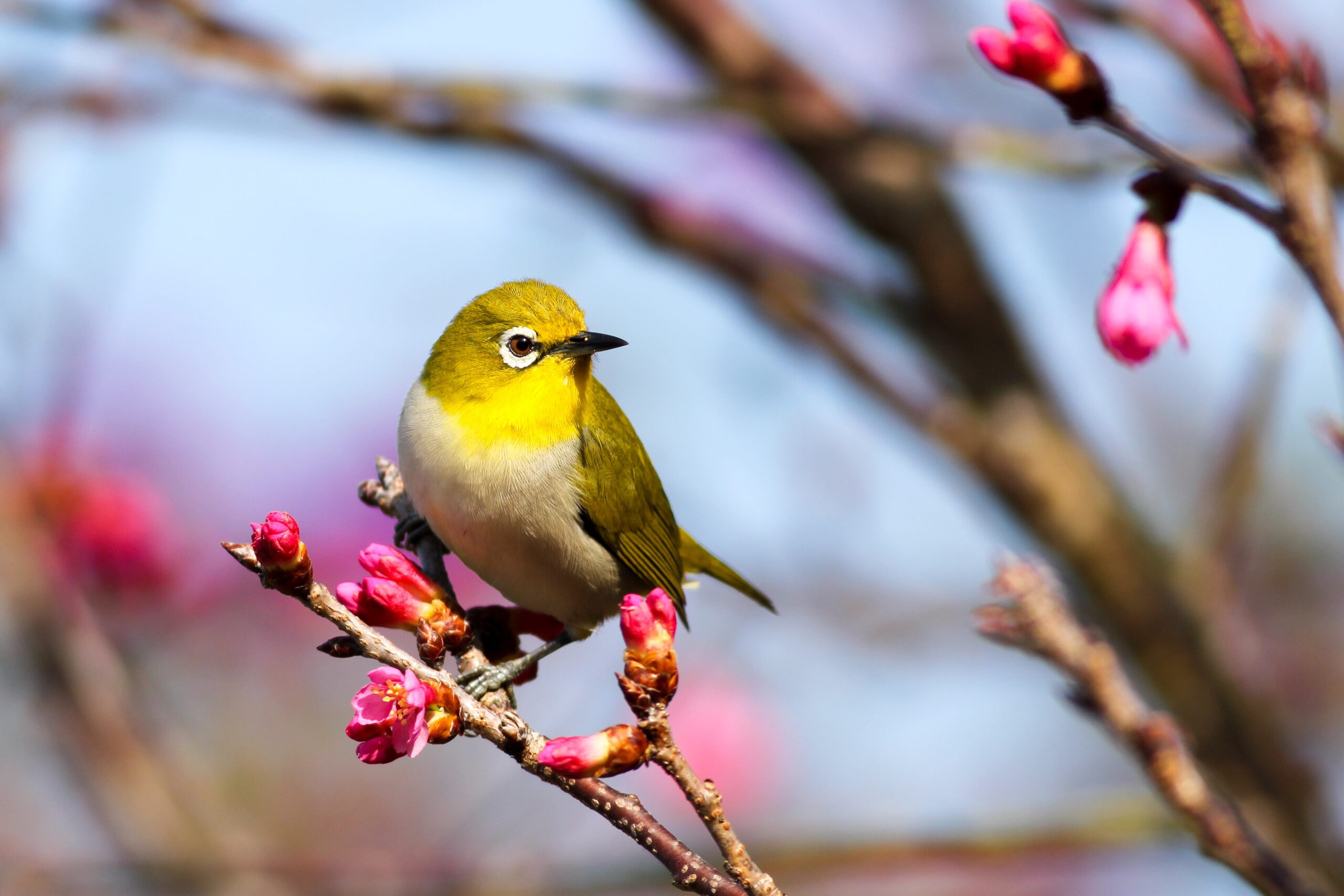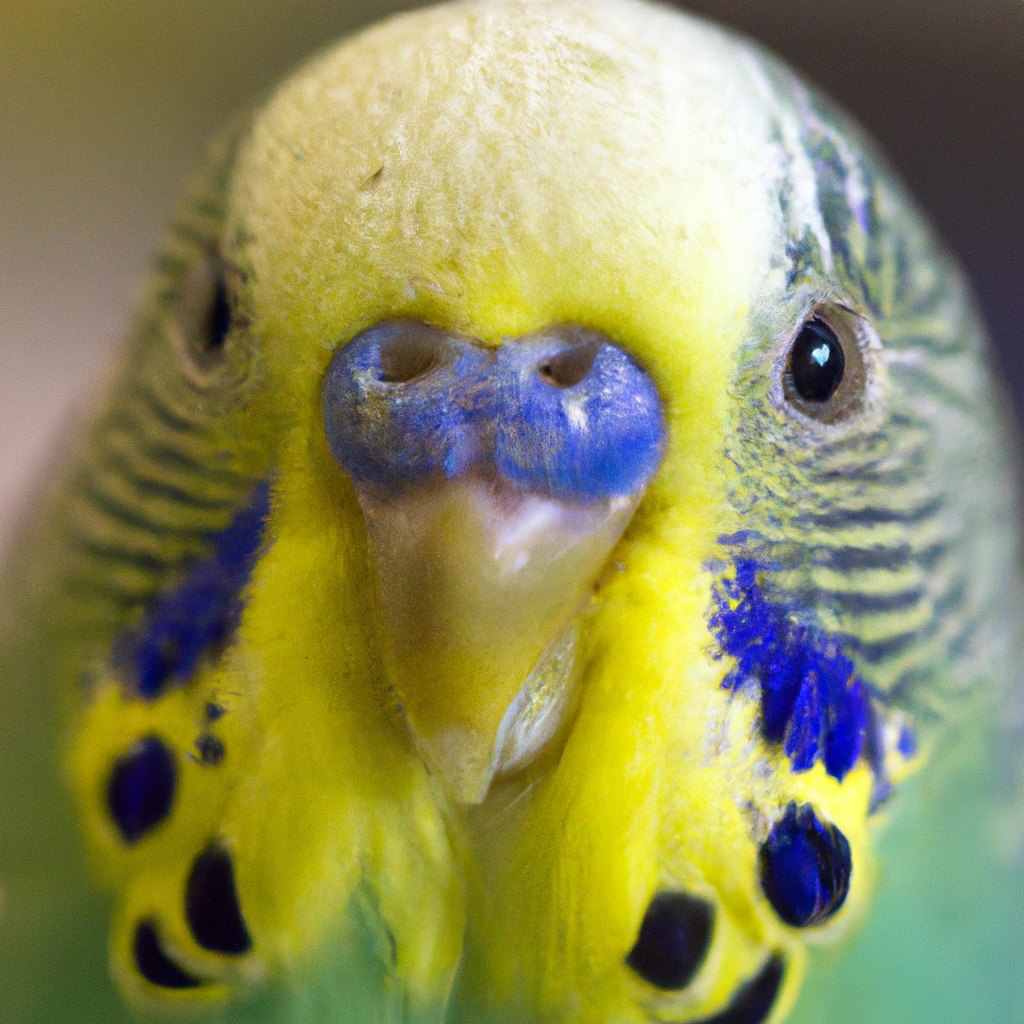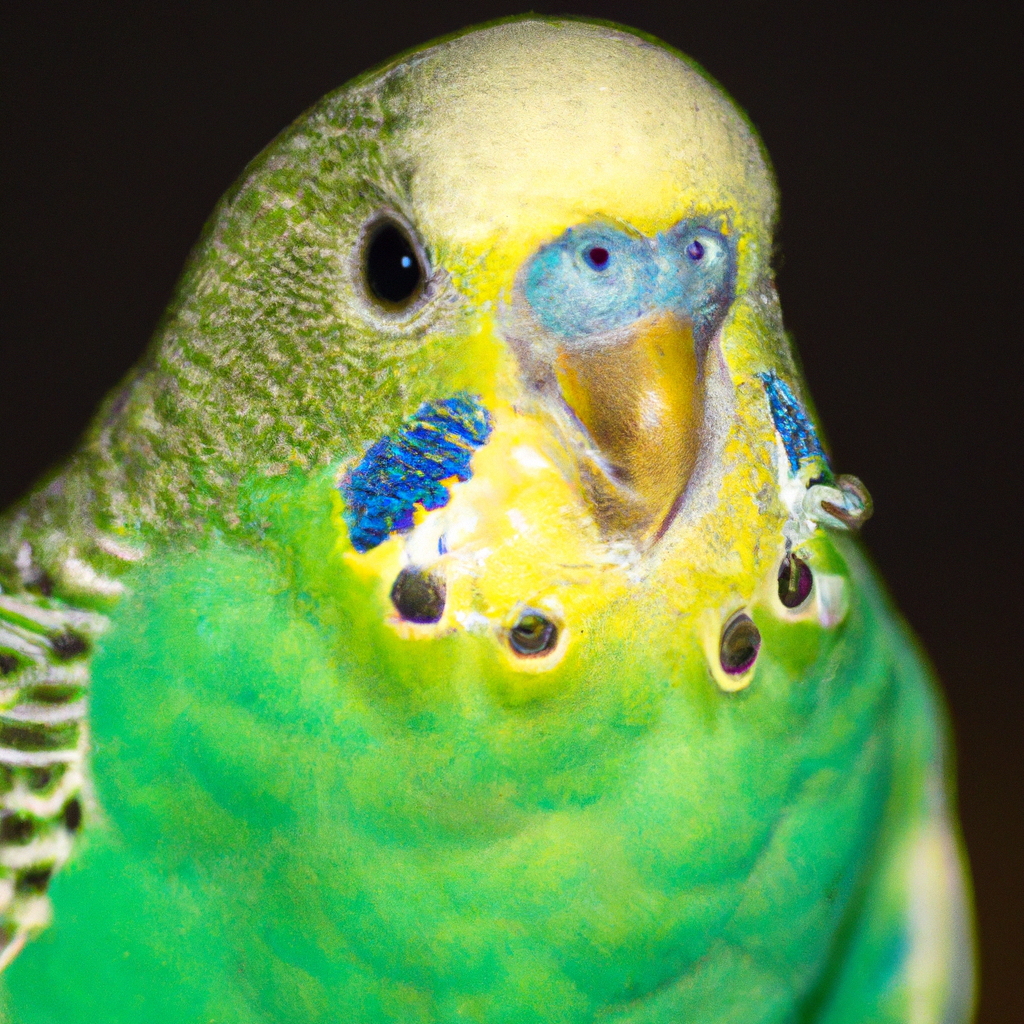Parakeets, known for their vibrant plumage and cheerful chirping, are a popular choice among pet bird enthusiasts. However, when considering bringing one of these avian companions into your home, it is important to understand their behavior and any potential risks. One frequently asked question is, “Do parakeets bite?” While it is possible for parakeets to bite, it is crucial to delve deeper into the reasons behind this behavior, the factors that influence it, and how owners can effectively address and prevent biting incidents. In this article, we will shed light on the topic of parakeet biting, equipping you with knowledge and strategies to foster a harmonious relationship with your feathered friend.

Physical Characteristics of Parakeets
Size and Weight
Parakeets, also known as budgerigars, are small to medium-sized birds with an average length of 7 to 8 inches (18 to 20 centimeters) from head to tail. They weigh around 1 to 1.5 ounces (30 to 40 grams). The size and weight of parakeets may vary slightly depending on the specific breed and individual genetics.
Coloration and Patterns
One of the fascinating aspects of parakeets is their vibrant and diverse coloration. They come in a wide range of colors, including shades of blue, green, yellow, white, and gray. Parakeets also exhibit various patterns, such as stripes, spots, or a mix of different colors on their plumage. These beautiful colors and patterns make parakeets a popular choice among bird enthusiasts.
Differences between Male and Female Parakeets
Distinguishing between male and female parakeets can be challenging, as both sexes possess similar physical characteristics. However, there are a few subtle differences that can help you determine their gender. Generally, male parakeets have a bright blue cere (the fleshy area above the beak) while females have a more pink or brown cere. Additionally, male parakeets tend to have a more melodious and complex song compared to the females.
Understanding Parakeet Behavior
Natural Behaviors in the Wild
To understand parakeet behavior, it is essential to consider their natural behaviors in the wild. Parakeets are highly social birds that form large flocks. They communicate through a variety of vocalizations and engage in activities such as foraging, preening, and grooming. In the wild, parakeets are known for their agility and flight skills, as they navigate through trees and open spaces. They also engage in courtship rituals and mate for life.
Behaviors in Captivity
When kept in captivity, parakeets may exhibit slightly different behaviors compared to their wild counterparts. Due to the limited space and absence of natural habitats, parakeets in captivity may display heightened territorial behavior or demonstrate more reliance on human interaction for socialization. Additionally, captive parakeets often engage in playful behaviors, such as swinging on toys or mirrors, which simulate their natural activities in the wild.
Signs of Aggression or Tension
Parakeets are generally docile and friendly, but there are times when they may exhibit aggression or tension. It is important to recognize the signs to ensure the well-being of both the bird and its owner. Some common signs of aggression in parakeets include fluffing up their feathers, hissing or squawking loudly, biting or pecking, and aggressive body postures such as puffing out their chests or spreading their wings. Tension may also be exhibited through rapid breathing, tail bobbing, or repeated head jerking.
Reasons Why Parakeets Bite
Territoriality and Protection of their Space
Parakeets are naturally territorial creatures, and they may bite as a way to protect their space or possessions. This behavior is often observed when someone invades their cage or when they perceive a threat in their immediate environment. To prevent territorial aggression, it is crucial to provide adequate space for the parakeet and ensure they have designated areas they can consider their own.
Feeling Threatened or Scared
Parakeets may also bite when they feel threatened or scared. This can happen if they are exposed to sudden loud noises, unfamiliar faces, or unexpected movements. It is important to create a calm and secure environment for the parakeet, minimizing stressful stimuli and gradually introducing them to new experiences to reduce fear and anxiety.
Mating and Hormonal Behavior
Male parakeets, especially during breeding season, can become more aggressive due to hormonal changes. They may perceive any interaction as a potential threat to their territory or mate. Female parakeets, on the other hand, may exhibit aggression when protecting their nesting area or eggs. It is important to understand and anticipate these hormonal changes to prevent or manage aggression during these periods.
Lack of Socialization or Training
Parakeets that have not been properly socialized or trained may be more prone to biting. Birds that have not had positive interactions with humans from a young age may view them as threats rather than trusted companions. Regular and gentle handling, as well as positive reinforcement training, can help mitigate this behavior and foster a strong bond between the parakeet and its owner.
Recognizing Aggressive Behavior in Parakeets
Signs of Aggression
Recognizing aggressive behavior in parakeets is crucial for their well-being and the safety of those around them. Some signs of aggression include lunging, biting, pecking, hissing, and aggressive vocalizations. Aggressive parakeets may also exhibit territorial behaviors, such as excessive wing flapping or charging at perceived threats. It is important to differentiate between aggression and normal protective behaviors, such as warning calls or bluffing displays.
The Frequency and Severity of Bites
The frequency and severity of bites can give valuable insights into the level of aggression displayed by a parakeet. If a parakeet only bites occasionally and the bites are mild, it may be a response to specific triggers or a sign of discomfort. However, if the bites are frequent, targeted, and result in broken skin or significant pain, it indicates a higher level of aggression that needs to be addressed promptly.
Body Language Cues
Understanding a parakeet’s body language can help predict and prevent aggressive behavior. Some body language cues that may indicate aggression include fluffed-up feathers, erect crest, wide and dilated eyes, aggressive postures (such as wings slightly spread), and tail flicking. It is essential to observe and interpret these cues to maintain a safe and harmonious environment for the parakeet and its owner.
Tips for Preventing Parakeet Bites
Creating a Safe and Comfortable Environment
Creating a safe and comfortable environment for your parakeet is crucial in preventing bites. Ensure that the cage is spacious, well-equipped with toys and perches, and located in a quiet area away from potential stressors. Parakeets need opportunities for mental stimulation and physical exercise, so providing a variety of toys and safe chewing materials is essential. Additionally, maintaining the cleanliness of the cage and the surrounding area promotes a healthy and stress-free environment.
Proper Handling Techniques
Proper handling techniques are important for both preventing and addressing biting behavior. Approach your parakeet calmly and confidently, avoiding sudden movements or loud noises that may startle them. Use a gentle but firm grip when handling the bird, supporting their body and wings to prevent them from feeling unstable or threatened. Gradually introducing handling from a young age and rewarding the parakeet with treats can help reinforce positive associations with human contact.
Gradual Socialization and Training
Gradual socialization and training are key to preventing biting behavior in parakeets. Begin by spending time near the cage, talking softly to the bird and offering treats through the cage bars. Once the parakeet becomes comfortable with your presence, start hand-feeding them treats, allowing them to associate your hand with positive experiences. Slowly progress to short periods of supervised out-of-cage time, providing a safe and supervised environment for exploration and interaction.
What to Do if You Get Bitten by a Parakeet
Clean the Wound
If you get bitten by a parakeet, the first step is to clean the wound thoroughly with mild soap and warm water. Gently remove any debris or foreign particles and pat the area dry with a clean cloth or tissue.
Assess the Severity of the Bite
Assessing the severity of the bite is important to determine the next steps. If the bite has broken the skin and is bleeding heavily, apply direct pressure with a clean cloth or sterile gauze to control the bleeding. If the bite is minor and only causes mild discomfort or redness, it can be treated with basic first aid measures.
Seek Medical Attention if Necessary
If the bite is deep, causes excessive bleeding, or if there are any signs of infection (such as redness, swelling, or pus), it is recommended to seek medical attention. A healthcare professional can assess the wound and prescribe any necessary treatments, such as antibiotics or tetanus shots.

How to Handle an Aggressive Parakeet
Identify the Underlying Cause
Identifying the underlying cause of aggression is essential in handling an aggressive parakeet. Observe the bird’s behavior and try to pinpoint any triggers or patterns. Whether it’s territoriality, fear, hormonal changes, or a lack of socialization, understanding the cause can guide you in implementing appropriate strategies to address the aggression.
Give the Parakeet Space and Time
When dealing with an aggressive parakeet, it is important to give them space and time to calm down. Avoid forcing interaction or engaging in any confrontational behaviors as it may escalate the aggression. Provide a quiet and secure environment for the parakeet to retreat to, allowing them to gradually relax and feel safe.
Positive Reinforcement Training
Positive reinforcement training can be a valuable tool in handling aggression in parakeets. By using rewards and treats, you can reinforce desired behaviors and redirect the bird’s attention away from aggressive tendencies. Work with a professional trainer or avian behaviorist to develop a training plan tailored to your parakeet’s needs and personality.
Parakeet Bite First Aid and Treatment
Assessing the Bite Intensity
When providing first aid and treatment for a parakeet bite, it is important to assess the intensity of the bite. Mild bites may only cause surface-level injuries, while deep or severe bites may require more intensive measures.
Cleaning and Disinfecting the Wound
After assessing the bite, clean the wound thoroughly using mild soap and warm water. Gently remove any debris or foreign particles, and rinse the area carefully. Disinfect the wound with an antiseptic solution recommended by a healthcare professional to minimize the risk of infection.
Applying First Aid Measures
If the bite is minor, apply an over-the-counter antibiotic ointment to the wound to promote healing and prevent infection. Cover the bite with a sterile bandage or dressing to protect it from further damage and to keep it clean.
Monitoring for Infections
After providing first aid, it is essential to monitor the wound for any signs of infection. Watch for increased redness, swelling, warmth, or the presence of pus. If any signs of infection appear, seek medical attention for appropriate treatment.

When to Seek Professional Help
Persistent Aggressive Behavior
If your parakeet displays persistent aggressive behavior that does not improve despite training and environmental adjustments, it may be necessary to seek professional help. Avian behaviorists or veterinarians specializing in bird behavior can offer insights and guidance on addressing and modifying the aggressive behavior.
Excessive or Severe Biting Incidents
If your parakeet exhibits excessive or severely aggressive biting incidents that result in significant injuries or pose a danger to you or others, seeking professional help is crucial. These experts can assess the underlying causes, develop a behavior modification plan, and provide tools and techniques for managing and reducing aggressive behaviors.
Unable to Handle the Parakeet Safely
If you find yourself unable to handle your parakeet safely or provide the necessary care due to its aggressive behavior, it is important to seek professional help. They can assist in determining whether rehoming the bird or finding a suitable environment is the best course of action for the well-being of both the parakeet and the owner.
The Importance of Socializing Parakeets
Early Socialization for Taming
Socializing parakeets from an early age is essential for taming them and preventing aggressive behaviors. Introduce positive human interaction as early as possible, focusing on gentle handling and offering treats. Gradually increase contact and exposure to various environmental stimuli, helping the parakeet build trust and familiarity.
Training to Reduce Fear or Aggression
Training plays a significant role in reducing fear or aggression in parakeets. By using positive reinforcement techniques, you can train your parakeet to respond to commands, engage in desired behaviors, and reduce fear-based or aggressive reactions. Patience, consistency, and rewards are key elements in successful parakeet training.
The Role of Positive Reinforcement
Positive reinforcement is a powerful tool in socializing and training parakeets. Reward desired behaviors, such as stepping onto your hand or interacting calmly with others, with treats, praises, or favorite toys. This helps the parakeet associate positive experiences with human interaction, creating a bond based on trust and mutual respect.
In conclusion, understanding the physical characteristics and behaviors of parakeets is crucial for pet owners to provide optimal care and prevent biting incidents. Recognizing the reasons why parakeets bite and implementing appropriate preventive measures can help create a safe and harmonious environment. When faced with aggressive behavior, proper handling techniques, training, and seeking professional help when necessary are essential to ensure the well-being of both the parakeet and its owner. By socializing and training parakeets, you can build a strong bond based on trust and positive reinforcement, fostering a rewarding relationship with these delightful birds.


